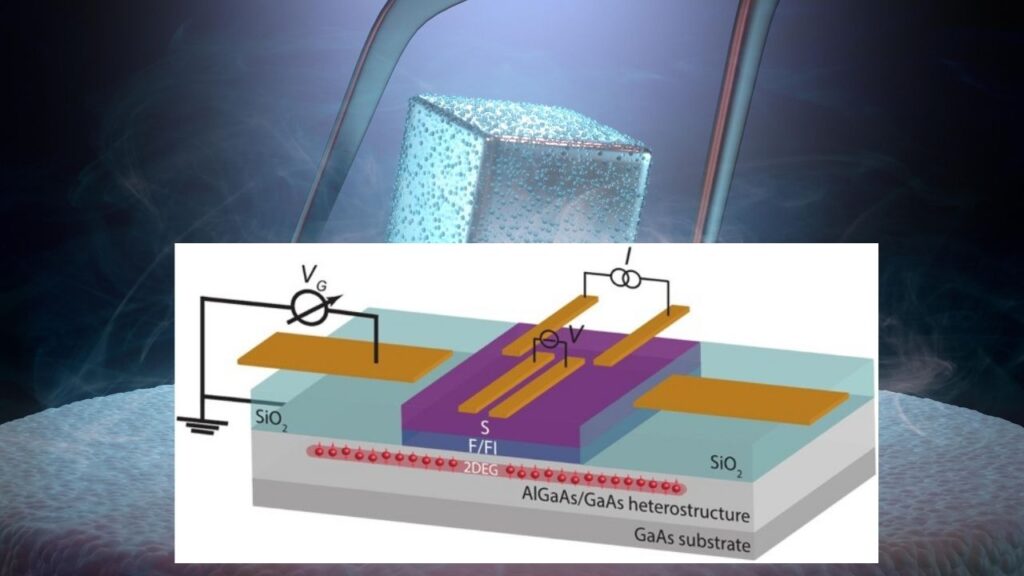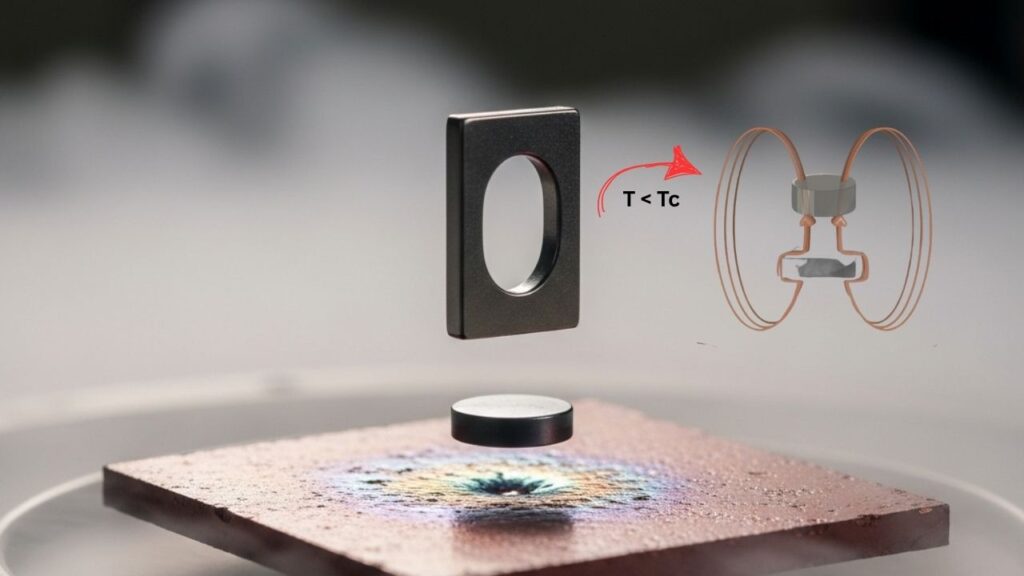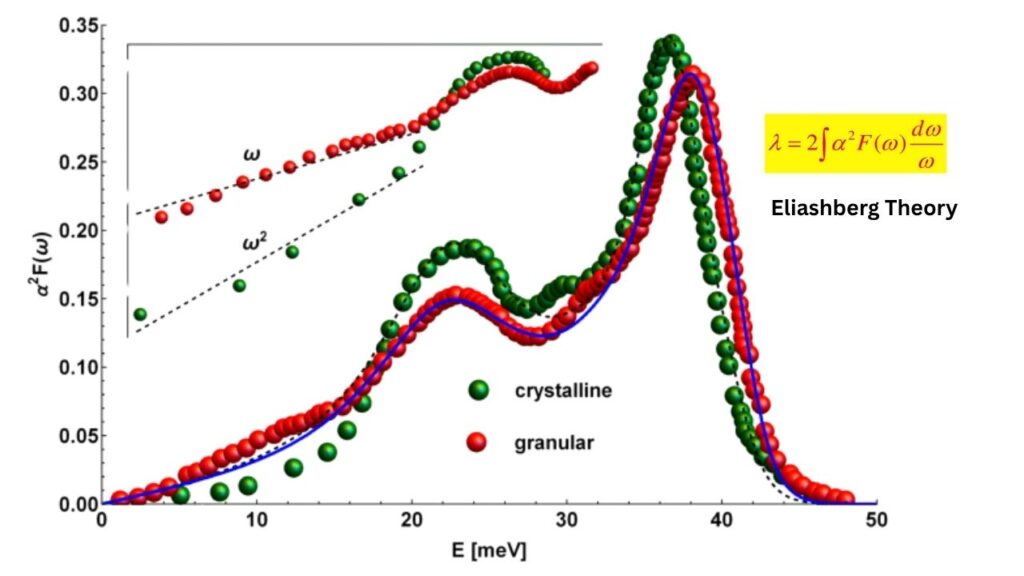How Electric Fields Control Superconductivity: Superconductivity is a fascinating physical phenomenon where certain materials conduct electricity without any resistance when cooled below a specific temperature known as the critical temperature. This zero-resistance state allows electric current to flow without energy loss, enabling revolutionary technologies such as MRI machines, maglev trains, and quantum computers. Traditionally, the control of superconductivity has been achieved by manipulating temperature or magnetic fields. However, a recent breakthrough has revealed a novel way to precisely control superconductivity — by using electric fields to switch it on or off in ultrathin metallic films.

This new understanding was achieved by physicists who discovered that applying static electric fields to superconducting thin films can suppress their superconducting state, enabling precise, energy-efficient control. This opens promising avenues for developing advanced quantum devices and energy-saving electronics, further pushing the boundaries of material science and condensed matter physics.
How Electric Fields Control Superconductivity
| Feature | Details |
|---|---|
| Discovery | Electric fields can control and suppress superconductivity in ultrathin metallic films. |
| Material Example | Niobium Nitride (NbN) films, 10–30 nanometers thick, with electric field penetration depth ~4–5 nm. |
| Required Electric Field | Approximately 10810^8108 volts per meter to effectively suppress superconductivity in thin films. |
| Mechanism | Electric fields disrupt Cooper pairs — the electron pairs that carry superconducting current. |
| Theoretical Framework | Quantitative modeling via Eliashberg theory explaining field-induced suppression of superconductivity. |
| Applications | Superconducting transistors, memory devices, quantum computing components, and energy-efficient electronics. |
| Research Institutions | University of Milan, National Institute of Metrological Research (INRIM), others. |
| Publication Date | June 5, 2025 |
| Official Resource | Phys.org article |
The discovery that electric fields can directly control superconductivity in ultrathin metallic films is a milestone in materials science and condensed matter physics. By revealing a new lever to modulate superconducting states without relying on cooling or magnetic fields, this research lays the groundwork for innovative quantum devices, superconducting transistors, and energy-efficient electronics. As scientists continue to explore this phenomenon, we can expect exciting advances in quantum computing and next-generation technology that harness the power of superconductivity like never before.
What Is Superconductivity?

Superconductivity occurs when certain materials exhibit zero electrical resistance and expel magnetic fields — a property known as the Meissner effect — below their critical temperature (often just a few kelvins above absolute zero). This phenomenon allows electrical currents to flow indefinitely without energy loss, making superconductors invaluable in technology.
The Role of Cooper Pairs
At the heart of superconductivity lies the formation of Cooper pairs. These are pairs of electrons that, under low temperature conditions, move through a crystal lattice without scattering, which prevents resistance. Disrupting these pairs destroys superconductivity.
How Do Electric Fields Control Superconductivity?
Until recently, the common belief was that electric fields do not influence superconductivity in metals significantly because of screening effects—the material’s electrons shield the interior from external electric fields. However, the latest research shows that when the superconducting material is an ultrathin film—on the scale of just a few nanometers—electric fields can partially penetrate and directly affect the superconducting state.
Penetration Depth and Film Thickness
The penetration depth is the distance an electric field can infiltrate into the material. For superconducting thin films like niobium nitride (NbN), this depth is around 4 to 5 nanometers. When the film thickness is comparable to this depth (e.g., 10–30 nm), the electric field can influence the internal electronic structure.
This partial penetration allows the electric field to interfere with Cooper pair formation, suppressing superconductivity. The effect is not seen in thicker films or bulk materials due to complete screening.
Quantitative Insights from Eliashberg Theory

Physicists have used Eliashberg theory — an extension of the classic BCS theory of superconductivity — to quantitatively understand how electric fields suppress superconductivity in thin films. This advanced framework models the interaction between electrons and lattice vibrations (phonons), incorporating strong-coupling effects and energy-dependent properties.
Calculations show that a static electric field on the order of 10810^8108 V/m is sufficient to suppress superconductivity in films roughly 10–30 nm thick, aligning well with experimental data. This theoretical validation provides a solid foundation for engineering devices that utilize electric field control of superconductivity.
Practical Applications of Electric Field-Controlled Superconductivity
1. Superconducting Transistors
Traditional transistors rely on semiconducting materials and electric fields to switch current flow. A superconducting transistor, however, can achieve switching with zero energy loss. The ability to control superconductivity electrically could allow for ultra-fast, low-power transistors that outperform existing silicon-based technologies.
2. Quantum Memory and Logic Devices
Quantum computers require components that can reliably switch quantum states without decoherence. Electric field control provides a precise and rapid way to manipulate superconducting qubits and memory cells, critical for scalable quantum computing.
3. Energy-Efficient Electronics
Electric control of superconductivity enables circuits that operate with minimal power dissipation and heat generation. This breakthrough could revolutionize high-performance computing centers and data storage facilities by drastically reducing their energy consumption.
Step-by-Step Guide: How to Understand and Implement Electric Field Control of Superconductivity
- Select Appropriate Superconducting Thin Films
Choose materials like niobium nitride (NbN) with film thickness between 10–30 nm, where electric field penetration can influence electron pairing. - Generate a Controlled Electric Field
Apply a static electric field perpendicular to the film, targeting field strengths around 10810^8108 V/m. - Observe Changes in Electrical Resistance
Monitor the transition from superconducting (zero resistance) to normal conducting states as the field increases. - Model the System with Eliashberg Theory
Use computational models to predict the electric field strength required for suppression and optimize device design accordingly. - Develop Superconducting Devices
Design transistors, memory units, or quantum components that utilize electric field switching for enhanced performance and energy savings.
The Bigger Picture: Why This Discovery Matters
Controlling superconductivity electrically represents a paradigm shift, moving beyond the traditional knobs of temperature and magnetic field. This capability is especially critical for advancing quantum technologies and creating low-power, high-speed electronics for the future.
Related Research and Resources
- Phys.org covers the breakthrough comprehensively: Phys.org News
- Nature Reviews Physics provides in-depth reviews on superconductivity fundamentals and electric field effects.
- National Institute of Standards and Technology (NIST) offers authoritative resources on superconducting materials and device standards.
D-Wave Extends Agreement With Aramco for Quantum Geophysical Optimization
Canada Advances Quantum Error Correction Techniques for Scalable Quantum Computing
China Unveils 3D Electronic Skin Mimicking Human Sensory Perception
FAQs About How Electric Fields Control Superconductivity
Q1: Can electric fields control superconductivity in all materials?
A1: Electric field control is most effective in ultrathin metallic films where the thickness is comparable to the electric field penetration depth. Bulk superconductors are typically unaffected due to strong screening.
Q2: How strong must the electric field be to influence superconductivity?
A2: Research shows fields on the order of 10810^8108 volts per meter are required for suppression in 10–30 nm films.
Q3: Are there risks of damaging the material with such strong electric fields?
A3: Properly engineered devices can apply these fields without damaging the films, but material integrity and device architecture are crucial.
Q4: How does this impact quantum computing?
A4: It offers a way to switch superconducting qubits electrically with high precision, enabling more scalable and energy-efficient quantum processors.
Q5: When can we expect commercial devices using this technology?
A5: While still in research and development, this discovery accelerates the path toward practical superconducting electronics and quantum devices in the coming decade.






